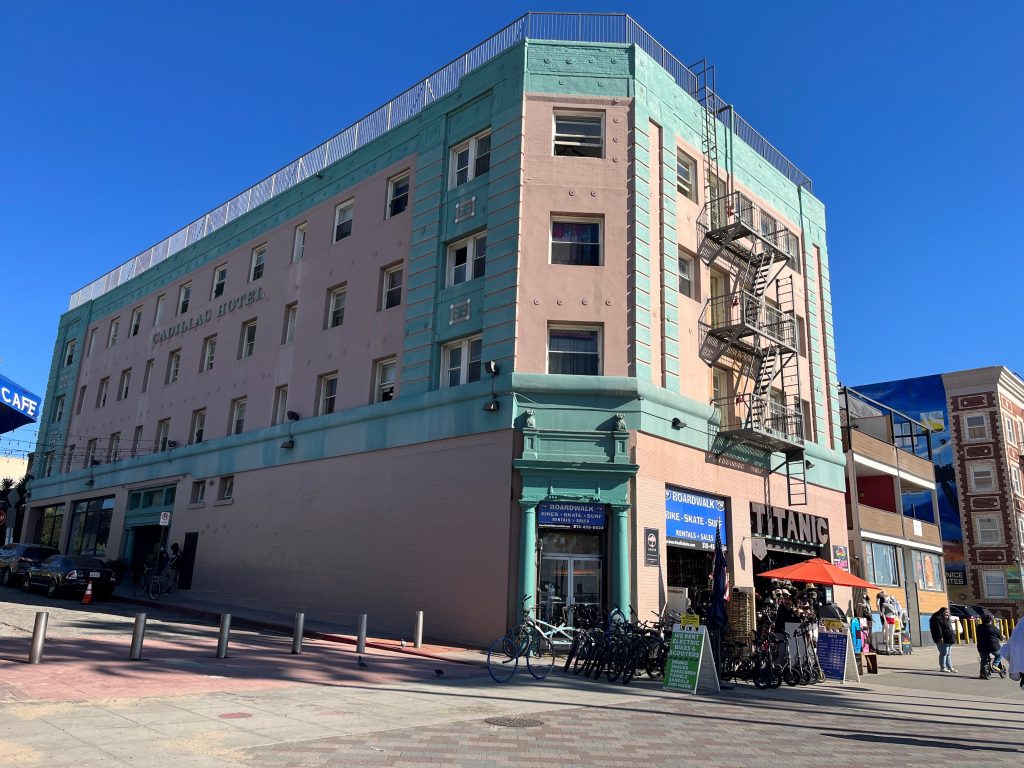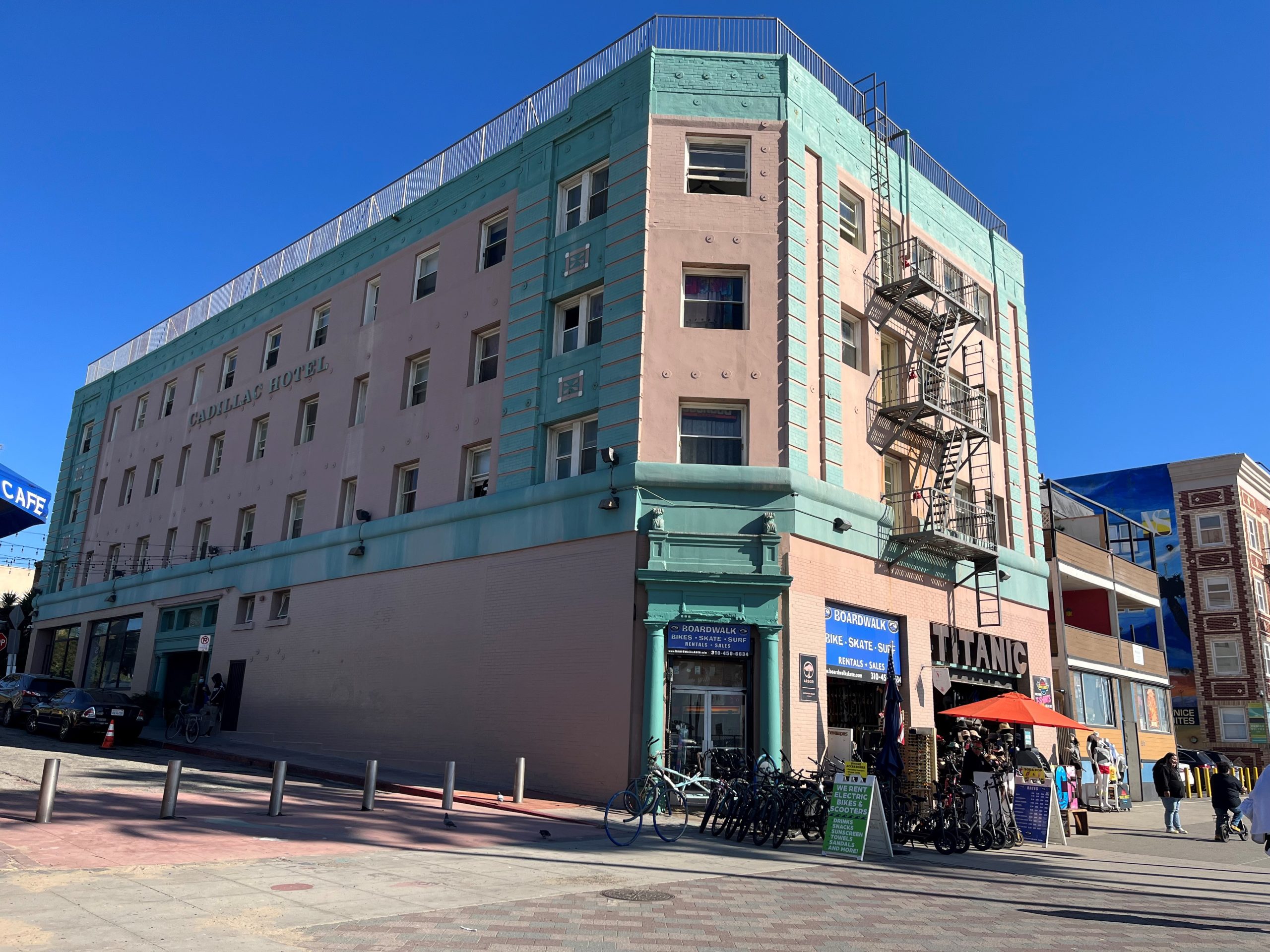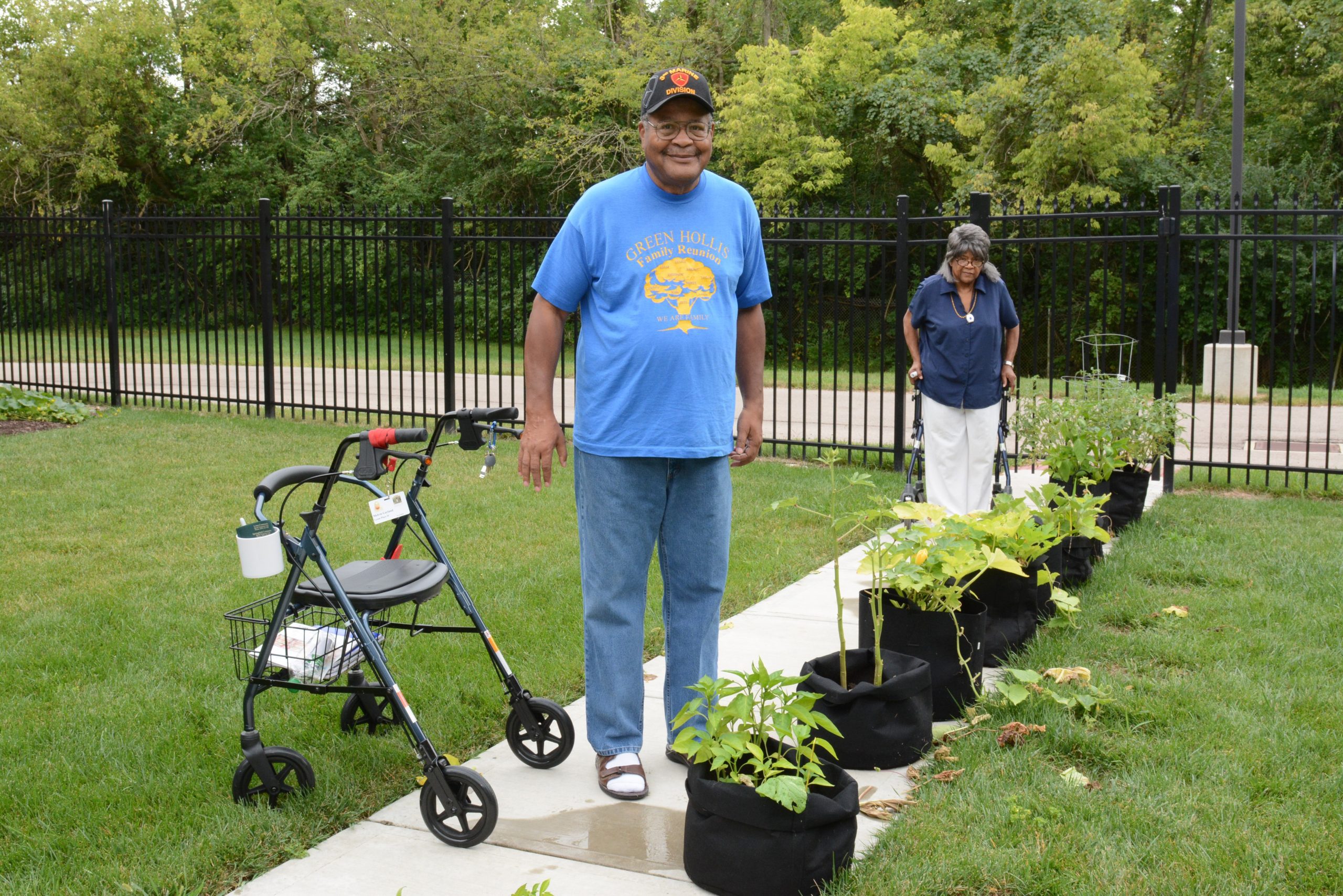
The Cadillac Hotel in Venice, one of Los Angeles’ Project Roomkey properties. Photo courtesy of Abt Associates
On the campaign trail, Mayor Karen Bass promised to address homelessness in Los Angeles. Since taking office in December, she has launched the Inside Safe initiative, which has already housed over 1,000 people in hotels and motels in just a few months.
But addressing homelessness is a marathon, not a sprint, and the new initiative has received mixed reviews in the media. As with any new initiative that aims to address a complex and challenging issue—in this case, the homeless encampments in Los Angeles—there are bound to be growing pains. The good news is that while there are many approaches to examine, the most promising model can be found in the city’s immediate history: California’s Project Roomkey.
Project Roomkey was the state’s approach to sheltering during the worst of the pandemic: to reduce viral transmission, people in need of housing were placed in hotels, motels, and trailers. In addition to helping reduce the possibility of infection, Project Roomkey all but eliminated several oft-cited shortcomings of the shelter system: it offered people autonomy, privacy, and safety, all of which are missing—to varying degrees—from traditional shelters. This was a remarkable evolution toward a form of shelter that likely will attract more users. But shelter only solves the question of where people will sleep; it doesn’t solve the issues that caused them to become or remain homeless. To do that, LA will need to apply other lessons learned from Project Roomkey.
First, once housed, residents of Inside Safe will need health care. The health care provided to Project Roomkey program participants varied across the state. Typically, healthcare workers at each site screened for COVID-19 symptoms. However, there were some sites where nurses tended to other conditions, such as diabetes and high blood pressure, or provided wound care. If participants needed a higher level of healthcare, they were often referred to community providers.
Abt Associates evaluated Project Roomkey, and we found that many service providers who participated reported needing to offer more physical, psychosocial, and mental health services at their sites than they had expected. Participants also needed a higher level of case management. Housing is the bedrock of health and well-being, which, in turn, are necessary to maintain the income needed for stable housing. Before they can find permanent housing, many Inside Safe residents will need comprehensive medical and supportive services (for example, case management and connections to public benefits) as they emerge from encampments. This means the homeless service providers that have been contracted by the city to staff Inside Safe sites should be enabled to scale staffing, including of case managers and housing navigators, to meet the needs of participants.
Once residents are ready to secure permanent housing, experience—and data—tells us they’ll need help taking those next steps, even if they already have a federal housing voucher or other rental assistance. We’ve learned from a variety of cities across California—including LA—that housing navigation services are critical to helping people settle in new homes.
Our 2022 report found that working with Project Roomkey participants to find new, permanent homes “was challenging because of the lack of affordable, available units. Many communities cited the high cost of housing and low vacancy rates as barriers to helping people move to stable housing, even when rent subsidies were available.” Housing navigation services were often necessary.
Housing navigation services go beyond identifying rental housing. People transitioning back to permanent housing often need help with the actual application process, including providing the necessary documentation. But even once the paperwork is ready, on the other side of the equation, property owners often need to be reminded about California’s Fair Employment and Housing Act, which prohibits them from discriminating against a person who uses a voucher to pay their rent. Supporting Inside Safe participants as they exit the program, and educating property owners as needed, will be important.
Finally, to truly tackle homelessness holistically, racial equity must be a priority as Inside Safe works with people experiencing homelessness in encampments and brings them indoors. Year after year, the U.S. Department of Housing and Urban Development’s annual report to Congress on homelessness tracks the dramatic overrepresentation of people of color in the population experiencing homelessness. This trend is because of a range of contributing factors, including the structural racism that exists in the housing market and in social safety net programs, and it plagues Los Angeles too. According to a 2022 count by the Los Angeles Homeless Services Authority (LAHSA), while Black people represent 9 percent of Los Angeles County’s population, they make up approximately 30 percent of the unhoused population.
The demographic data collected during the first phases of Project Roomkey’s implementation showed disparities in access to—and usage of—the program by race and ethnicity. In response, LA modified its process for selecting Project Roomkey participants. It prioritized participants from vulnerable neighborhoods, called the “most disadvantaged communities,” chosen using CalEnviroScreen. LAHSA additionally took into account which individuals were most endangered by COVID-19 and the amount of time they had spent unhoused. To promote much-needed racial equity, Inside Safe should similarly prioritize equitable access to the program—and then to subsequent housing resources. Moving forward, participating service providers, policymakers, and funders will need to continuously examine Inside Safe’s data by race, ethnicity, gender, and other intersectional factors to ensure the program is accessible to all who need it. Perhaps the most valuable data will come from the accounts of those best positioned to identify the system’s gaps and opportunities for improvement: participants, and others with lived experience and expertise.
After Moving In
Once people are successfully housed, they will need both governmental and community support to prevent them from falling back into homelessness. This includes help navigating the public benefits for which they are eligible, opportunities for employment, ongoing supportive services like case management, and, maybe most importantly, a community in which they feel safe and supported. We know that is one reason people stay in encampments in the first place—for community.
But one step at a time. Inside Safe’s initial success of bringing people indoors is encouraging. And as Mayor Bass and her team establish housing resources to support vulnerable residents of Los Angeles, there are success stories and homeless services practitioners with decades of experience to help guide city and civic leaders—and beneficiaries—on the path toward sustained, equitable, and safe housing inside.






Why are the wraparound services (i.e. S+C) formerly provided by shelters no longer supported by HUD? Since the supply of affordable housing is limited, why not immediately provide for and fund wraparound services in shelters to address the issues correlated with homelessness?
Your statement (see below) could be improved by public policy that supports early intervention – wraparound services while homeless persons are in shelter awaiting housing.
“But shelter only solves the question of where people will sleep; it doesn’t solve the issues that caused them to become or remain homeless.”